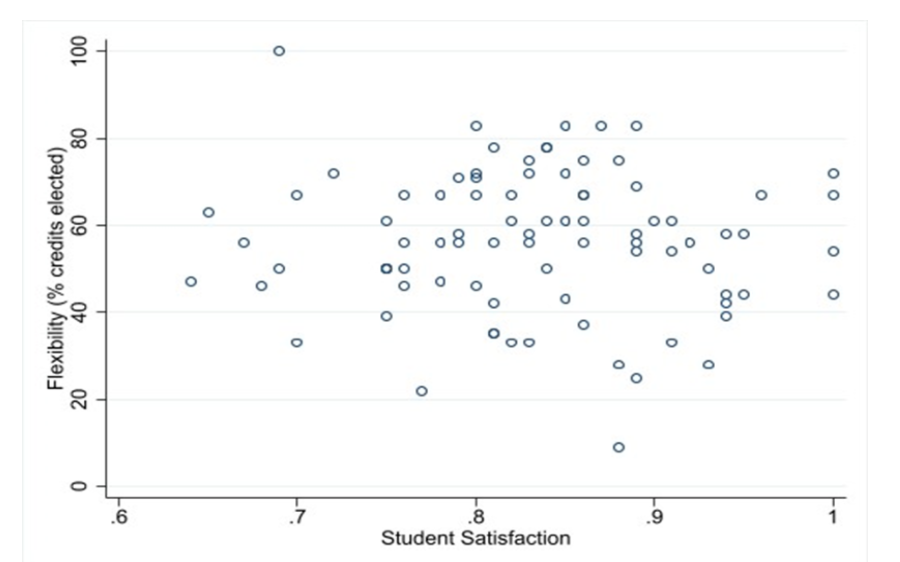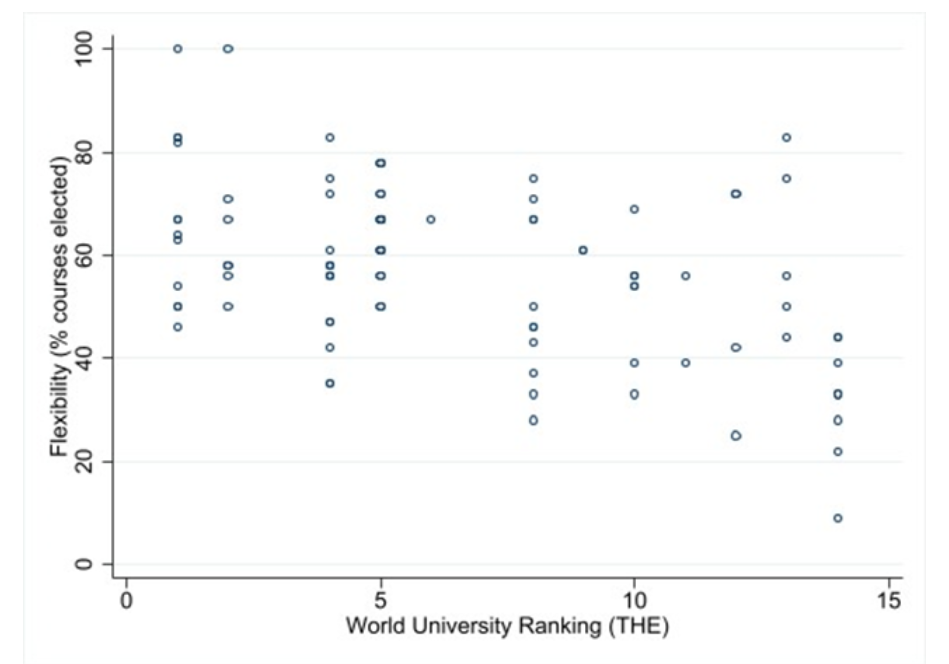The Covid crisis has both highlighted and challenged the marketisation of universities.
Students have gone on rent strikes demanding a reduction of their tuition fees – as customers, they are not satisfied with the service that they have paid for.
An important aspect of the marketisation of universities is how these institutions generate their income. After reforms by David Cameron’s cabinet, government funding has become principally linked to the number of admitted students, further raising the bar of tuition fees.
Consequently, UK universities compete on the education “market” for a higher number of enrolled students or a quality premium for their services to generate more income. So what may help to entice student-customers to pay such high fees?
Have it your way
Many argue that the incorporation of elective or module choice into a programme is a strategy that will attract a higher number of enrolled students. The thinking goes that students are responsible for their learning experience and are thought to be rational-thinking individuals, capable of choosing what suits them best.
In this framing, freedom of choice creates a sense of autonomy that attracts student-customers. In other words, the student is the customer, and the customer is king.
Curriculum flexibility is supposed to not only raise student satisfaction ratings, but also an institution’s brand strength, ranking and reputation. These factors, in turn, boost the number of student applications and ultimately the institution’s revenue stream.
But is that how it works in practice?
Back here in the real world
We have analysed ninety-three undergraduate programmes in Political Science and International Relations across the UK. In the figure below, we have plotted the programmes’ flexibility (percentage of credits that are electives) against student satisfaction as measured by the National Student Survey (NSS) UK.
If there was a connection, we might expect to see data points clustered around a linear upward-sloping graph, but the data is scattered. We acknowledge the widely voiced criticism on the validity of NSS metrics, in particular the Teaching Excellence Framework (TEF). However, the theory holds that such statistics are quintessential in the public construction of reputation and brand name. We can conclude that curriculum flexibility does not increase student satisfaction nor TEF ratings.

Another important feature of the marketisation of universities is the focus on rankings and reputation as integral to the institution’s brand. Such statistics can serve as a quality guarantee to potential students thereby directing their choice of university.
In theory, older and higher-ranking universities are less exposed to the workings of the free market because their strong brand generates a steady influx of students along with external funding regardless of any marketing strategy. The hypothesis would then be that younger and lower-ranking universities offer a higher degree of flexibility in their undergraduate programmes to attract more students.
Upside down
But in reality, our research indicates that the higher-ranking universities lean towards a free-elective system. It doesn’t matter if we select the QS Global Ranking, the Times Higher Education World Ranking or the rankings in the Guardian League Table 2020 – lower-ranking universities with a weaker brand name offer relatively rigid undergraduate programmes in comparison to the elite institutions. How do we explain these contrasting results?
Older and higher-ranking universities are known to enjoy larger financial resources. Therefore, these institutions are able to provide a study programme with more free electives and specialisation courses in comparison to younger and lower-ranking universities. Deeper pockets enable a higher staff – student ratio. It enables senior academics to teach electives on their field of expertise, leaving the prescribed subjects to the teaching assistants.

Within the academic debate, curriculum flexibility is associated with the marketisation of universities, which could lead to the pursuit of revenue as primary interest at the cost of the quality guaranteed in a prescribed curriculum. However, our research suggests that the incorporation of elective / optional courses / modules into undergraduate programmes is better understood as a premium, “luxury” service.
While “develop your own curriculum” is a catchphrase on many university websites to woo the potential student-applicant, curriculum flexibility is not associated with higher student satisfaction. Instead, it is an organisational trait associated with (past) wealth that is actively marketed. Considering the financial constraints under which (smaller) universities operate, and more specifically the tenuous position of Political Science programmes, we caution against emulating the flexible curricula employed by higher ranking institutions. It is not the silver bullet many may be looking for.
















It seems therefore that an institution wanting to give the impression of a highly ranked institution, should offer electives. It is a shame that this research doesn’t compare the number of electives, to the number of students recruited on the course, as in my experience academics suggest that students will apply to courses with lots of electives, not that this makes students satisfied. the number of students on each course should be available through UCAS data for home students, and British Council data for Overseas students. If you could compare these numbers to electives, and ideally do an anova to… Read more »
It is possibly also worth considering here that smaller, younger institutions are likely to demonstrate a more nimble approach to curriculum design in order to remain financially viable. In my anecdotal experience, the older and larger the institution is the less receptive they are to large curriculum changes, particularly ones that are purported as a USP, within a marketplace of institutions all pushing the same USP. Some institutions are starting to look at streamlining their curriculum offers on the basis that greater free choice tends to lead to greater student dissatisfaction with timetabling and said institution being able to honour… Read more »